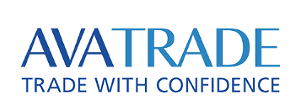Don’t invest unless you’re prepared to lose all the money you invest. This is a high-risk investment and you are unlikely to be protected if something goes wrong. Take 2 minutes to learn more
Real-world financial assets are being tokenized on public blockchains; approximately $160 billion in fiat currencies and $2 billion in US Treasury and commodities have already been tokenized. Long hailed for its ability to upend established financial infrastructure, blockchain technology offers advantages including better capital efficiency, quicker settlement times, greater transparency, and lower operating expenses. The creation of cutting-edge financial instruments like decentralized finance (DeFi), which currently has over $100 billion in assets locked up, is being fueled by these benefits.
A key component of this transition is tokenization or the process of using tokens to represent conventional assets on blockchains. It’s critical to first comprehend traditional financial market infrastructures, especially as they relate to securities clearing and settlement, to properly appreciate their potential.
The Paperwork Crisis on Wall Street and the Establishment of the DTCC
Understanding the weaknesses of the conventional banking system requires a close examination of the paperwork crises of the 1960s. In the past, transferring actual certificates was a necessary step in stock transactions, but as trading volumes increased in the 1960s, this method became unsustainable.
The Central Certificate Service (CCS) was established in 1964 as a result of this crisis, and it ultimately developed into the Depository Trust Company (DTC) and the Depository Trust & Clearing Corporation (DTCC). In the current securities settlement process, where ownership is represented by electronic book entries rather than paper certificates, the DTCC is now a key player.
Financial Market Infrastructures’ (FMIs’) Development
The foundation of the international financial system is made up of financial market infrastructures, or FMIs. Among them are:
Payment Systems (PSs): Manages safe money transactions, similar to Fedwire and SWIFT.
Central Securities Depositories (CSDs): The DTC is one example of a CSD that offers safekeeping and securities accounts.
Systems for Securities Settlement (SSSs): Enabling the settlement and transfer of securities. Similar to the NSCC, central counterparties (CCPs) reduce counterparty risk to guarantee the execution of open contracts.
Trade Repositories (TRs): Transaction data is centrally recorded electronically.
Because of its silos, numerous middlemen, and heavy reliance on trust, the current system is inefficient and prone to failures like settlements that can upset the market.
Blockchain Technology’s Potential for Financial Markets
Blockchains present the idea of atomic transactions, in which a transaction either completes successfully or fails in part. This feature can reduce the risks associated with the delivery-versus-payment (DvP) process, which has historically relied on different systems for the delivery of securities and payments. These procedures can be integrated using blockchain technology, which decreases the need for middlemen and boosts productivity.

Permissionless Blockchains’ Function
Global, neutral settlement layers, public, permissionless blockchains such as Ethereum and Bitcoin enable anybody to take part in transaction execution and confirmation. Public blockchains provide transparency and trustless execution, which are essential for the broad acceptance of tokenization, in contrast to private or permissioned blockchains, which are managed by particular entities.
Case Studies in Tokenization MakerDAO: The DAI stablecoin is progressively supported by physical assets such as US Treasuries, demonstrating how blockchain technology is integrated with conventional assets.
BlackRock’s USD Institutional Liquidity Fund (BUIDL): Initially launched on Ethereum, this fund tokenizes US Treasury shares, however, off-chain records are still needed according to legal regulations.
Ondo Finance: Draws attention to the potential and existing legal problems in the field by offering tokenized products backed by US Treasuries, such as OUSG and USDY.
Stablecoins are the most successful example of tokenization to date, holding over $165 billion in tokenized fiat currencies and becoming more and more important in the financial markets.
In Summary
The financial system has developed into a complicated, intermediated structure as a result of crises and inefficiency. Public blockchains present a viable substitute due to their impartial, programmable, and censorship-resistant ledgers. But there are still issues to be resolved, such as smart contract security, legislative obstacles, and technological constraints. Technology and regulatory developments mean that the tokenization of assets on public blockchains has the potential to transform financial markets into a more integrated and effective system.
Make money without lifting your fingers: Start using a world-class auto trading solution
- Broker
- Min Deposit
- Score
- Visit Broker
- Award-winning Cryptocurrency trading platform
- $100 minimum deposit,
- FCA & Cysec regulated
- 20% welcome bonus of upto $10,000
- Minimum deposit $100
- Verify your account before the bonus is credited
- Fund Moneta Markets account with a minimum of $250
- Opt in using the form to claim your 50% deposit bonus
Learn to Trade
Never Miss A Trade Again

Signal Notification
Real-time signal notifications whenever a signal is opened, closes or Updated

Get Alerts
Immediate alerts to your email and mobile phone.

Entry Price Levels
Entry price level for every signal Just choose one of our Top Brokers in the list above to get all this free.




